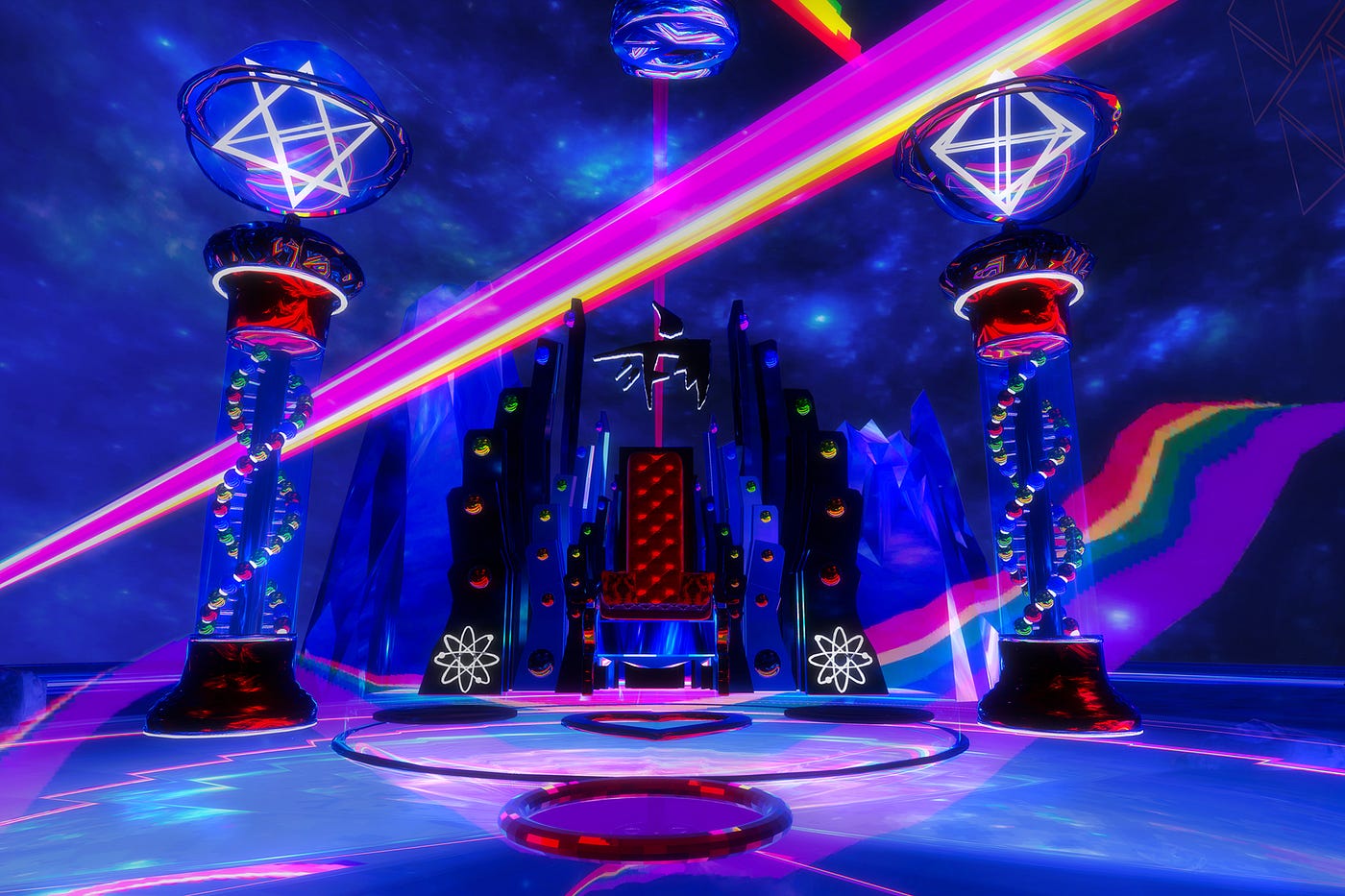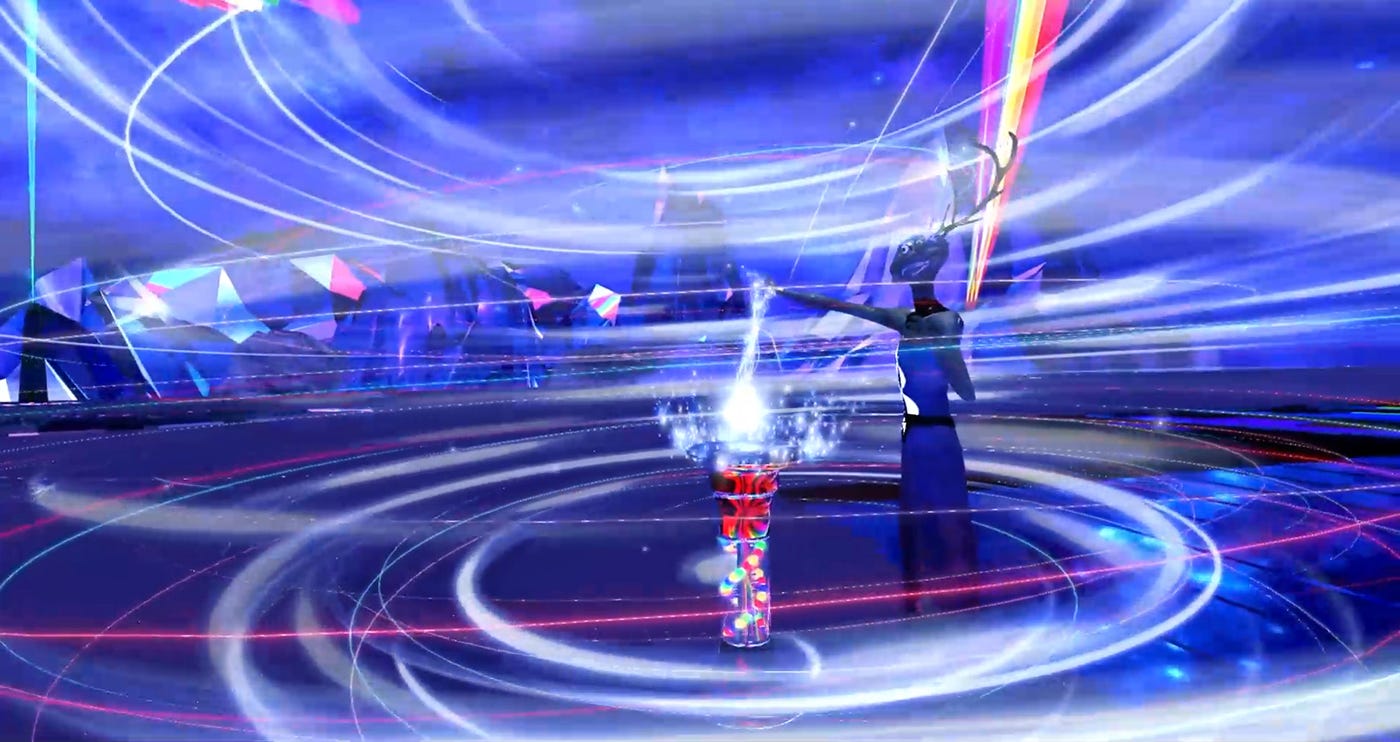
One of the few silver linings of the High Pandemic were the wave of experiments that fused live-action immersive theatre with virtual reality tools.
Amongst the most prolific of teams in this lane have been The Ferrymen Collective, a team of designers, engineers, and performers who have brought their experience creating immersive theatre and virtual worlds together to become regular faces on the festival circuit. Their co-production with CoAct Productions of The Severance Theory: Welcome to Respite premiered at Tribeca Film Festival and went on to play at the Venice International Film Festival and be adapted for Korea’s Kaohsiung Film Festival.
This week sees their latest endeavor Gumball Dreams, which uses the music and world designs of member Christopher Lane Davis as a platform for an intimate immersive theatrical experience realized in VRChat, make its International premiere at the 79th Venice International Film Festival after debuting at South By Southwest earlier this year. (Read our review.)
We reached out to the Collective to get their take on The Immersive 5 as they make their way to Venice for La Biennale. The Ferrymen Collective are: co founders Brian Tull, Braden Roy, Deirde V. Lyons, and Stephen Butchko along with Christopher Lane Davis, Andy Aloisio, Whitton Frank, and Eliot Addams.
The Immersive 5 series asks creators across the various immersive disciplines the same five questions in search of both their approach to crafting work, and the elusive nature of immersive work itself.

No Proscenium: What does “immersive” mean to you, and what terms do you use when talking about your own work?
Brian Tull: You could certainly make a checklist of attributes shared by most effective immersive shows, interactivity, physical immersion in the set, audience agency, but I think one of the most essential elements is somewhat less tangible. True immersion, I would argue, comes not from what you’re shown but from the illusion there is much more you’re not being shown and that the world you’re entering existed before you arrived and will continue after you leave. This concept exists in traditional theatre as well; if an actor performing Hamlet treats the character as if he was brought into existence for the events of the play and his reality goes no further, then that is what will be conveyed to the audience and thus actors are taught to delve into the mind of the character as if they do exist and have led full lives before the audience ever meets them. The difference is that in traditional theatre, the actor will only ever be asked to account for what is in the script whereas in an immersive, the actor must be prepared to address any facet of that character or risk breaking the illusion that there is anything that remains unseen.
NP: What should every creator be thinking about first and foremost when designing for the audience?
Deirdre V. Lyons: What do you want your audience to feel? And working backwards from there. Ideally, this will manifest in many ways, the overall emotion you want to permeate the whole experience, and smaller sections that can be used to build toward or support that emotion in some way. An often-overlooked opportunity is onboarding, which is the perfect moment to start your audience with the right mindset, including anything that you may need to inform or teach them about your show, as well as offboarding and bringing them out of the experience with a sense of completion. I suggest building this around an emotional foundation. Using that as your north star and allow it guide you when in the thick of production.
Get Noah J Nelson’s stories in your inbox
Join Medium for free to get updates from this writer.
SubscribeSubscribe
NP: What did you wish you knew when you were starting out with this stuff and what’s the one thing you’d tell a creator starting out today?
Braden Roy: This may seem silly — and is something which coincided with starting itself — but the fact that doing this was even a possibility, on several different fronts. Immersive theatre has historically been limited to a select few metropolitan areas — all of which I’m hundreds or even thousands of miles away from — for practical reasons: there simply hasn’t been a reliable amount of mindshare or existing audience base to be sustainable outside of them. Or at least, that has been the perception. While this is partially a chicken-or-the-egg situation, in the end creators now have the tools to make impactful immersive content regardless of location and audiences likewise now have the tools to access it. And that audience spans the entire globe! It’s simply a matter of taking the plunge and now — after having dived in myself — I can assure you that the water is just fine! Jump in.
NP: Why do this kind of work and not something more “traditional” that might have more mainstream appeal at the moment?
Whitton Frank: As artists I believe we are constantly searching for new ways to explore the world and connect with people. Creating theater in VR absolutely fulfills those goals. It pushes the boundaries of what we might have thought possible and allows us to reach out to people all over the world. It is the very new and unexplored nature of this work that makes it so exciting and intriguing. Yes it is difficult and slow going at times and yes I am not sure
everyone is ready for what we are trying to show them. But our work and that of the many other amazing companies and people working and creating in the world of XR is showing us a whole new way to relate to art, the world and the people around us.
NP: What inspirations — and anything is fair game here — are currently shaping your creative practice?
Christopher Lane Davis, aka Screaming Color: Mid-2021, I found myself with serious “creator’s block.” No matter how much I tried to will myself to continue developing my world, I found myself stuck, uninspired. A friend suggested I step away from the work and travel; that it might help. I considered Mexico City, and once that delicious, monumental idea had popped into my head, like a moth to the flame, I couldn’t not. 48 hours later, I was there.
Literally within the first day, I had fallen in love. With the city, and with a mind-blowingly special and beautiful man who showed me all around that incredible city. With every day my mind expanded and my heart grew, I knew without any doubt I was exactly where I was supposed to be, and that I could never contract back to who I had been before.
My work over the last year, both the physical design and stories that take place within, have been HEAVILY influenced by specific Mexican architecture, by the history surrounding those places, and by what I have learned from that man about life and about love.
Follow your impulses for adventure, because the most interesting and rewarding path is almost never the direct one.
Discover the latest immersive events, festivals, workshops, and more at our new site EVERYTHING IMMERSIVE, new home of NoPro’s show listings.
NoPro is a labor of love made possible by our generous Patreon backers. Join them today!
In addition to the No Proscenium website, our podcast, and our newsletters, you can find NoPro on Twitter, Facebook, YouTube, Instagram, in the Facebook community Everything Immersive, and on our Discord.




















Discussion